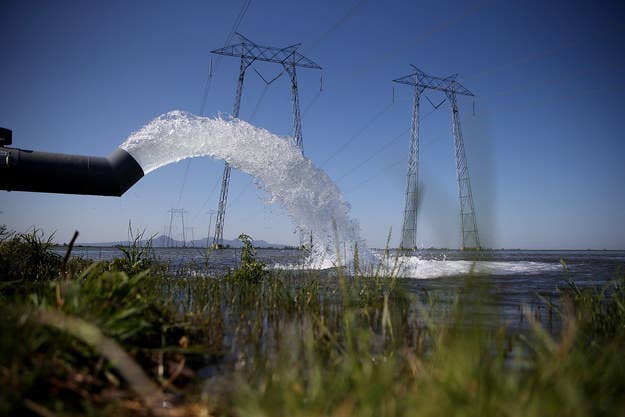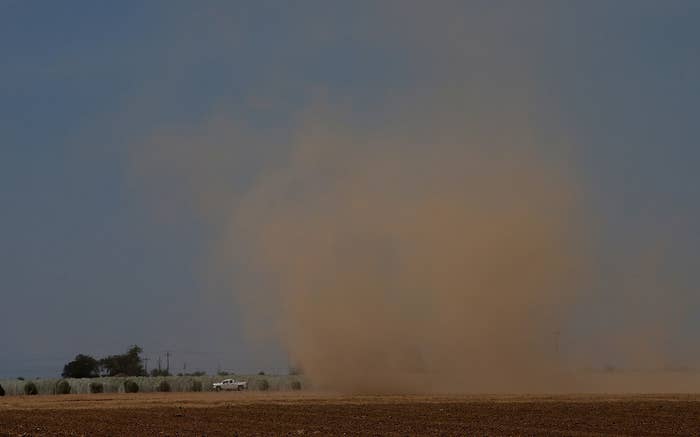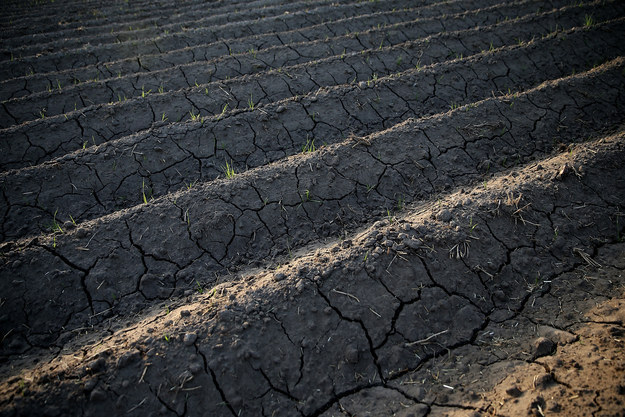
As California's drought continues to grip the state, regulators and a group of farmers have agreed to rare voluntary water cutbacks.
The farmers are all located in the fertile San Joaquin River Delta and have agreed to a plan that will require them to either cut their water use by 25%, or leave 25% of their land fallow. The plan was proposed by the farmers and accepted Friday by the State Water Resources Control Board.
Tim Moran, a spokesman for the board, told BuzzFeed News the plan affects those who have land that abuts rivers. Those landowners have the right to pull water directly out of those rivers — a concept known as "riparian rights." Moran said there are as many as 2,000 farms in the area that fall into the category, about half of which are candidates for the program.
"Part of their motivation is they want to demonstrate that they are participating and trying to help the drought situation," Moran added.
But the cuts represent a kind of imperfect solution for many farmers, some of whom believe the state has no right to cut their water use in the first place.

Thomas McGurk is an elected board member of the Stockton East Water District and told BuzzFeed News that farmers in the region proposed the cuts in order to be proactive.
McGurk farms outside the Delta, where he said there is currently sufficient water. But nearby Delta farmers in his county, he said, are anxious as the state moves closer and closer to requiring cuts.
"That was to avoid a court fight," McGurk added of the voluntary program. "[State] lawyers were ready to go to court."
Lynn Miller's family has been farming in the region for 144 years, when her great grandfather arrived. Miller told BuzzFeed News her water rights are 114 years old and currently enable her to grow oats and alfalfa on nearly 200 acres. She described a meeting of hundreds of farmers Thursday to discuss the voluntary cutbacks as "intense" and said that reducing water use will mean significant loss of revenue.
"If somebody asked you, 'Will you take a 25% hit on your income?' what would you think?" she said.
Miller added that California's complex water rights system guarantees farmers with riparian rights priority access to the water, and attorneys representing the farmers have tended to agree that the state couldn't force cuts. Nevertheless, rather than fight the State Water Resources Control Board in court, farmers will likely choose to participate in the voluntary cutback program.
"People are driving around asking each other, 'Hey, what are you going to do?'" Miller said. "There's a limited amount of water. We're willing to do our part if this is going to help."
Jerry Robinson, who farms a couple thousand acres "right in the middle of the delta," agreed that farmers in the region want to show that they're contributing to conservation efforts. And like Miller, he expressed skepticism that the State Water Resources Control Board could curtail riparian rights.
But Robinson is also willing to make cuts and was in the midst of looking at which crops to reduce when he spoke with BuzzFeed News. The idea is that if additional cutbacks are imposed, they won't apply to those who already made reductions.
"They have assured us this year that for the people that get into this program, the State Water Resources Control board will not bother us on that land any more this year," he said.

Still, the voluntary program may also be just the beginning for California. State regulators indicated earlier this week they were considering more widespread, mandatory cutbacks. Those restrictions weren't announced Friday because, according to Moran, cooler temperatures and some rain actually reduced water use in recent days. Still, more cutbacks for farmers may be coming.
"I think the feeling is it's inevitable," Moran said. "The speculation is sometime next week."
Farmers wanting to participate have until June 1 to submit a plan explaining how they will make cuts. Regulators will then do spot checks to enforce the program.
